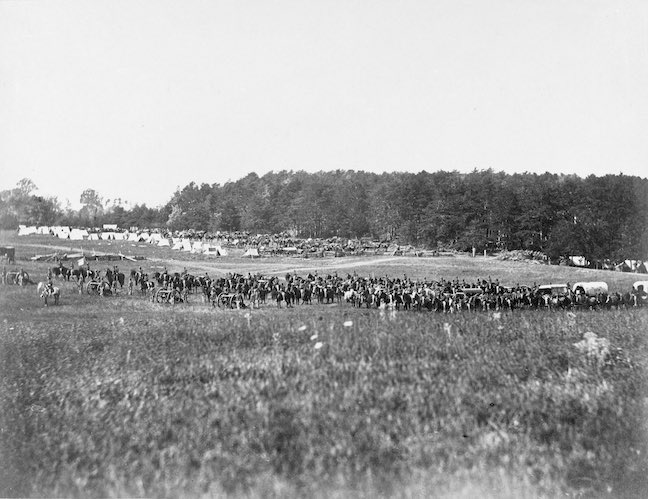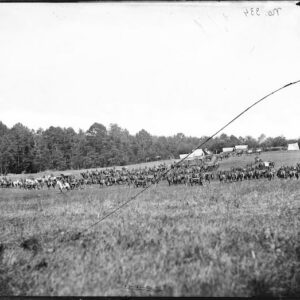| Credit: | by Gardner (James) |
|---|---|
| Date: | 1863.09 |
| Negative Size: | 8 in. x 10 in. |
| Equipment: | caisson; cannon; field carriage; handspike (wood); Howitzer gun; pup tent; wedge tent |
| Locations & Lines: | Culpeper VA; Virginia |
| Military Units: | 4th US Artillery; Army of the Potomac; US Horse Artillery; US Horse Artillery (1st Brigade); US Army |
| Transports: | ambulance wagon; freight wagon |
| Sources: | Library of Congress; National Archives |
$6.99
File Details: AILNm, 800 DPI, TIFF, Original Photograph, 41.4 Mb
Image ID: AILN
Gardners Photographic Sketch Book Of The War. Vol. 2, No. 59. Battery A, Fourth U. S. Artillery, Robertsons Brigade. February, 1864. This is one of the celebrated horse batteries of the Army of the Potomac. In the batteries designed for cavalry service, every man was mounted, except in action, when the cannoniers necessarily served the guns on foot. The picture represents the four 12-pounder light brass pieces in battery, with limbers and caissons to the rear, and on the left the battery wagon, forge, ambulance, and wagons for transportation, embracing the entire equipage of a light battery in the field. Beyond, another battery is seen in camp. The horses being hitched in, and limber chests open, would seem to indicate that an inspection is about to be made. Just in the edge of the woods is brigade headquarters.
When General Pleasanton [sic] commanded the cavalry of the Army of the Potomac, in 1862, Captain Robertson (now General) was his Chief of Artillery, and was in the van of the forces, in the campaign which terminated at Antietam. The Captain aided materially in driving the rebels out of Frederick City, after a severe artillery fight. Following them closely, he fired the first shot at the battle of South Mountain, keeping the rebels engaged till the arrival of General Burnsides command. Again, at the battle of Antietam, his batteries were busy doing great execution. He was promoted subsequently, and held a command in the reserve artillery, for some time, always with the reputation of being a thorough artillery officer.
Probably actually Culpeper, VA, September, 1863.
Library of Congress mistakenly credits Alexander Gardner.

